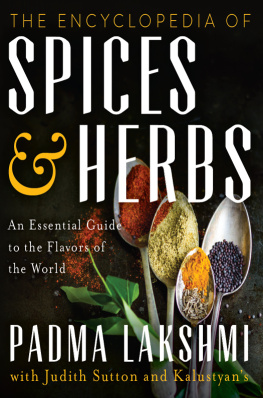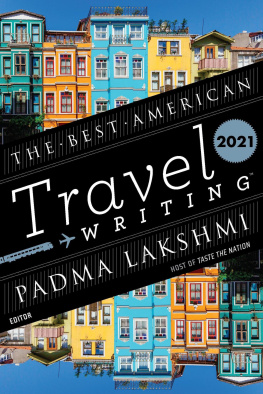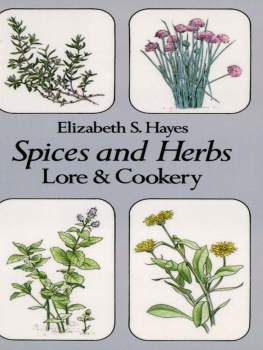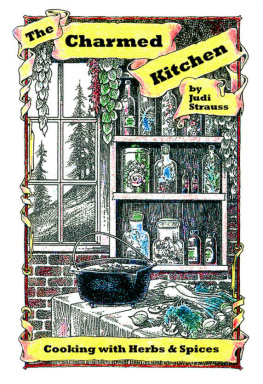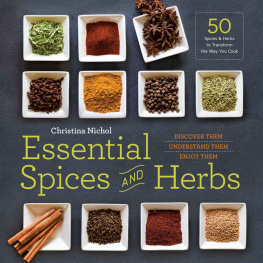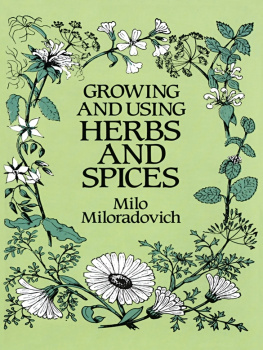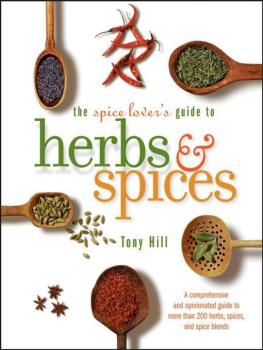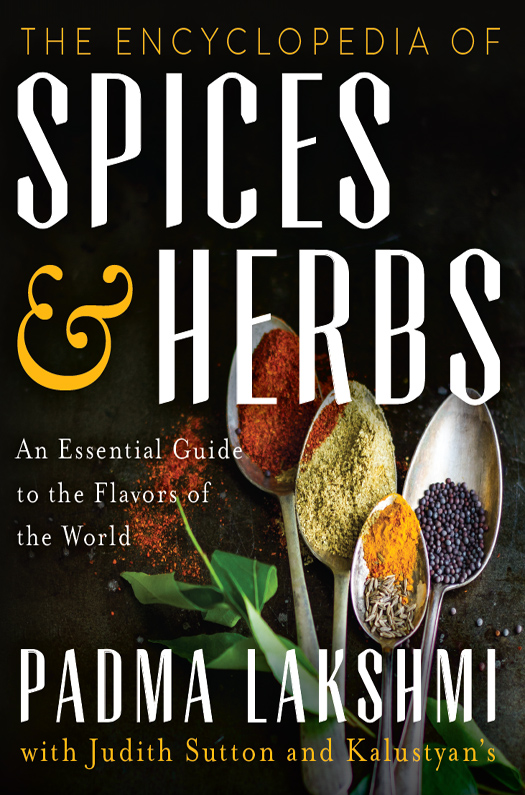For Krishna,
my favorite cooking companion
CONTENTS

Guide
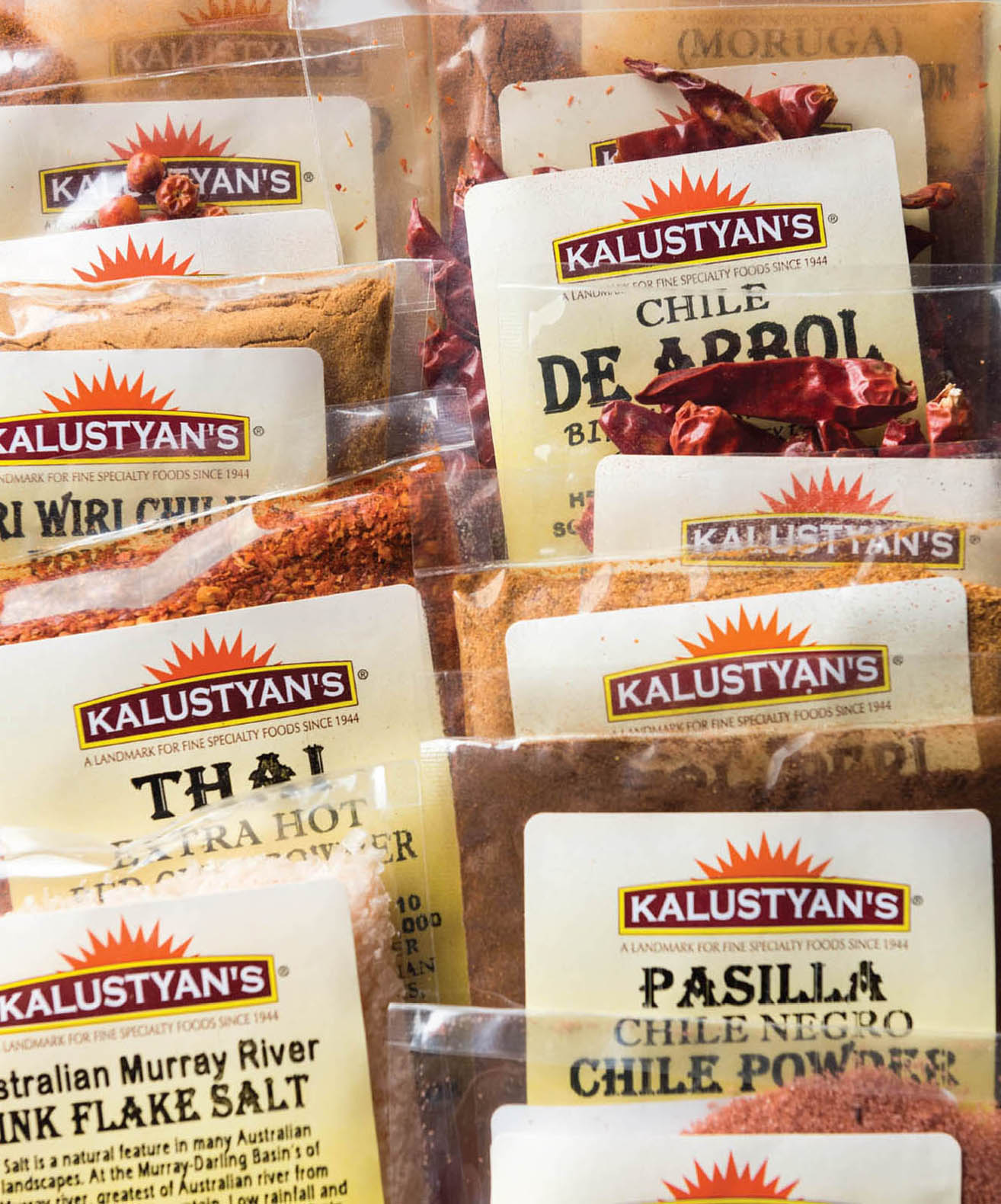
Spices have always been part of my life. The black peppercorn, along with turmeric and ginger, comes from Kerala, the home of my ancestors, deep in the heart of South India. I can remember savoring its aroma in my grandmothers kitchen, the smell of the dry whole spices roasting in her iron wok as she made various curry powders from family recipes. The sound of tempering spices in hot oil, mustard seeds popping like rapid gunfire, sizzling fresh curry leaves, and the sharp, smoky haze of dried chilesthese sensations lured me into the kitchen, and Ive remained there, among the canisters and jute sacks, ever since. Spices are something I feel almost born into; they awakened my nose and palate to the bounty of tastes and flavors awaiting me in the larger world.
But such bounty means that for every beloved flavor that can enhance a dish or re-create a memory, there are dozens more youve never seen or heard of. Once, twenty years ago, walking through the souk in Marrakesh for the first time, I was thrilled to find a stall with jars of bright green powders, twigs, garlands of nubby yellow roots, chunks of resins, and other treasures, which the shopkeeper, despite a lot of vigorous hand movements and grunts between us, could not describe to me in English. I packed as many of these as I could into my suitcase, ready to impress my loved ones and dinner guests, confident in my ability to make do with the knowledge and practice I already had. Until, back in my kitchen, I had no idea how any of it should be usedI felt lost. In India, I would have had one of the women in my family to guide me. They could sniff out the identity of anything I brought back to them. And in New York City, I would have gone back to the store I had spent years in as a child: Kalustyans, on Lexington Avenue.
I began visiting Kalustyans with my mother when I was four years old. She relied on the store whenever she ran low on the spices and herbs she expected to be fresh, aromatic, and authentic. Open since 1944, for many years Kalustyans was the only purveyor in North America to sell Indian, Armenian, and Turkish spices and groceries. For a few generations of cooks, and many immigrants to the city, it was a singular culinary mecca, a place where you could always find anything; and if something wasnt there, the owners would make sure it was the next time you came in. They also plied delighted children with samples and sweets, like dates, Jordan almonds, and pieces of baklava, and still do todaywhen my own daughter walks through their door now, she runs loose, knowing she will have her fill of generous treats.
Kalustyans initial success came because of two local Armenian churches and their parishioners, to whom the owner, K. Kalustyan, an Armenian himself, catered. But soon a whole community mushroomed around it, and the store became a vital enclave of immigrant life. I heard from my uncle Bharat, who emigrated to New York from India in the 1960s, about how precious Kalustyans and its contents were to so many new New Yorkers during those first few years. In those days, he said, It was a gift to have that store. We didnt have much else as a salve, to remind us of home, and take away our homesickness. In the mid-1970s, when the Murray Hill neighborhood around Kalustyans began to change, Kalustyans, then a small store, changed with it. A Bangladeshi man named Sayedul Alam, known as just Alam, opened a shop called Spice and Sweet Mahal on the corner, and down the street, Curry in a Hurry, a fast-casual restaurant outside of which you can still find a line of yellow cabs each day. In 1988, Alam and his cousin Aziz Osmani, also the current owners, took over Kalustyans, along with 125 and 127 Lexington Avenue, which were added and now together house the large Kalustyans store as it exists today. But I will always think of the address as its original: 123 Lexington Avenue.
When I moved to New York after college in the mid-1990s, the first place I went to fill my cupboards was Kalustyans. And it was Kalustyans I called long-distance from Milan when I needed help with my treasures from the Moroccan souk. I was spoiled in my young lifetime to have these two resources, my family and Kalustyans, at my disposal. But what did others do?
To understand spices and their uses is to open a door to endless culinary possibility. Just as a good sorceress needs her book of spells, so, too, does a good cook need a compendium of seasonings and herbs to understand them. These potent parcels of flavor have been part of the very fabric of feeding ourselves for millennia, and yet most of us in the Western world still dont understand how to use many of them, where they came from, or how easy cooking with them can be. Consider the peppercorn, for example. This tiny fruit, a mighty bead of heat, has been a most potent catalyst of intrepid exploration and human history. It was these piquant spheres that made India and the rest of Southeast Asia so valuable to Europeans. The same is true for ginger, cassia and cinnamon, and many more spices. Whether a seed, flower, root, or bark, these elements of nature are responsible for shaping much of the world as we know it today. And in the culinary world, ingredients are being given new histories, incorporated into all kinds of dishes. All of a sudden, ginger and lemongrass have made their way into crme caramel and dessert sauces from Michelin-starred French chefs, American barbecue sauces contain chipotle peppers, and wasabi is being whipped into mashed potatoes at Thanksgiving.
I have always wanted a book like this, a reference guide that would tell me not only the provenance but also the uses of whatever spice or herb caught my attention. I wanted to harness all the things I had ever learned over years of combing through markets around the world and quizzing the different cooks and chefs I met along the way throughout my career in food. And I wanted to catalog and honor the encyclopedic breadth of Kalustyans knowledge, gained over decades of serving their customers, hunting and gathering on behalf of curious New York cooks who come in, frazzled, with some recipe book or slip of paper in hand.
Its in this spirit that I am happy to introduce The Encyclopedia of Spices and Herbs, written with Judith Sutton and filled, of course, with sumptuous and helpful photographs of Kalustyans products. We have tried our best to be clear, precise, and brief in the interest of our cooks, who may wander through these pages while planning a menu or preparing a meal in the kitchen. Im confident you, too, will fall in love with the world of spices and herbs, and that the food you create will be changed for the better by a wealth of new additions to your pantry.
Padma Lakshmi
New York, 2016
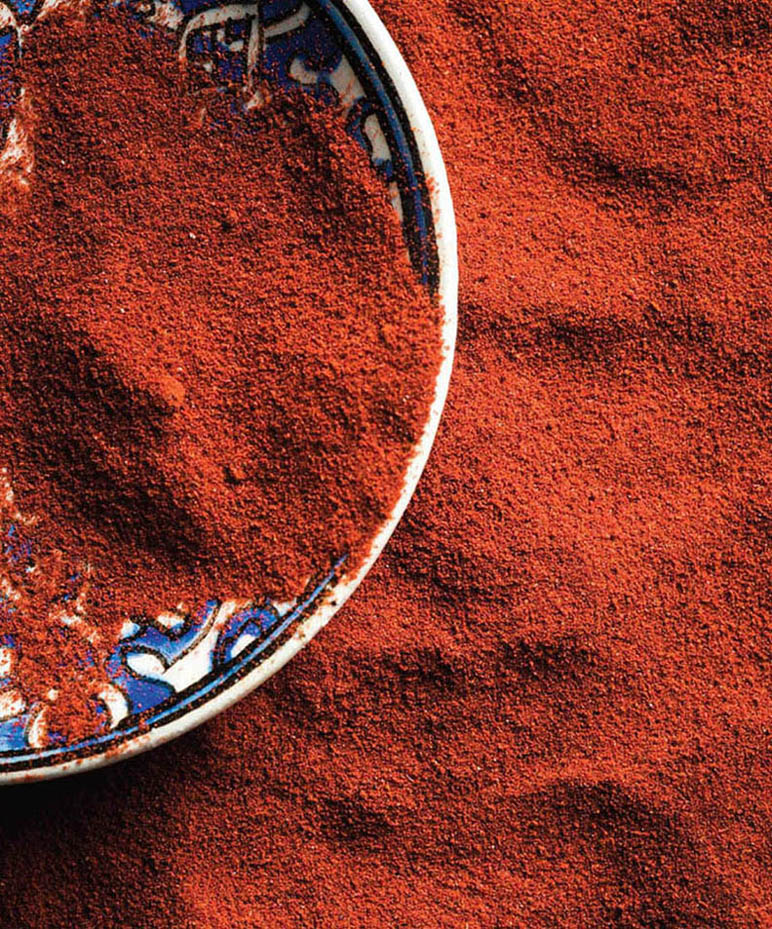

PREVIOUS SPREAD, CLOCKWISE FROM TOP LEFT: advieh, aniseeds, annatto, asafoetida, Armenian spice mix, ajowan, allspice, amchur, and anardana
ACHIOTE
See .

